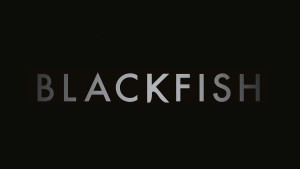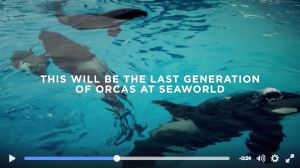SeaWorld Sees the Light
Published on April 5, 2016, at 10:45 p.m.
by Leah Tobak.
SeaWorld recently announced the immediate and complete cessation of Orca (killer whale) breeding in their captivity. This ongoing battle has persisted for years among animal activists everywhere, and the reaction to this announcement was guaranteed to be high-profile, to say the least.
Let’s be honest though: SeaWorld doesn’t have the most consistent track record when it comes to public relations. Platform Magazine has kept up with the ongoing controversy over the years.
Much of the initial audience skepticism began when a trainer was killed by one of the whales in 2010, bringing the safety of working with killer whales into question. SeaWorld responded quickly to the crisis and was able to keep its head above water for the most part, but that was only the beginning.
Commotion then escalated significantly with the release of the documentary, “Blackfish.” This film initially went behind the scenes with Tilikum, a killer whale responsible for multiple human deaths in its lifetime, but revealed animal cruelty and emotional testimonies along the way. SeaWorld had no immediate response: a major PR faux pas.

Its first attempt to recover came years later in the form of a “SeaWorld: You Ask, We Answer” Twitter campaign. That failed miserably, as the company was swarmed with hateful tweets and chose to ignore tweets from significant animal rights organizations such as PETA.
So how are people reacting to the PR strategies currently being implemented for this new, big announcement?
On one side, SeaWorld has been much more strategic in its PR efforts this go-around. SeaWorld used a video that directly communicated with its audience by saying, “We Heard You,” when announcing the changes. The organization also produced a website explaining the changes it will be making in the SeaWorld experience in depth, including natural encounters with the animals rather than shows. This site also features direct quotes from significant leaders in the SeaWorld community: an attempt to be transparent with its intentions.

SeaWorld has also formed positive partnerships with animal rights groups such as The Humane Society of the United States. HSUS CEO and President Wayne Pacelle said, “SeaWorld’s commitment to end breeding of Orcas is a long-held goal of many animal advocacy organizations, and we commend the company for making this game-changing commitment.”
Lastly, the organization included a less chaotic “Ask SeaWorld” page on the SeaWorld Cares website. While its staff may be able to pick and choose the questions they answer, losing some credibility in that transparency, it allows SeaWorld to provide extensive answers to pressing questions rather than attempting to respond in 140 characters while being swarmed with hate mail.
On the other hand, many individuals remain skeptical about SeaWorld’s tactics. Suzanne Hammelman of The Hawthorn Group L.C. said, “It remains to be seen if SeaWorld can correct the damage. The core problem has been their apparent misread of the depth and breadth of consumer sentiment on the issue of animal welfare. A comprehensive risk management plan would have identified both operational and reputational risks — and their consequences — before they became a problem. By continuing to defend a controversial practice, the company provided the ammunition the most strident members of the opposition needed to magnify the issue.”
Instead of responding years ago with these necessary changes, SeaWorld’s actions also coordinate with a time of decreased attendance, profit and market value, causing individuals to question whether these changes are actually about the well-being of the animals or just the financial benefit of the park. Hammelman continued, “As it is, after miscalculations and missteps that have hurt their business badly, SeaWorld has after six years reached the only conclusion possible. So, in effect, change occurred because they were ‘forced’ by public protest and the company gets no credit for doing the right thing.”
These contrasting viewpoints are commingling in the minds of many. Mary Genova, a senior studying marine biology at The University of Alabama, said, “I think that it’s a combination of the two [viewpoints]. While there are many people working in the SeaWorld organization that truly care for the betterment and well-being of the whales, we have to remember that it is still a business. They are taking steps to better that business in multiple ways. … It’s a massive corporation so there’s no way they aren’t thinking of the money aspect of it all.”
Time will tell if the recent changes satisfy visitors and activists or the motives of the company will continue to be questioned.




